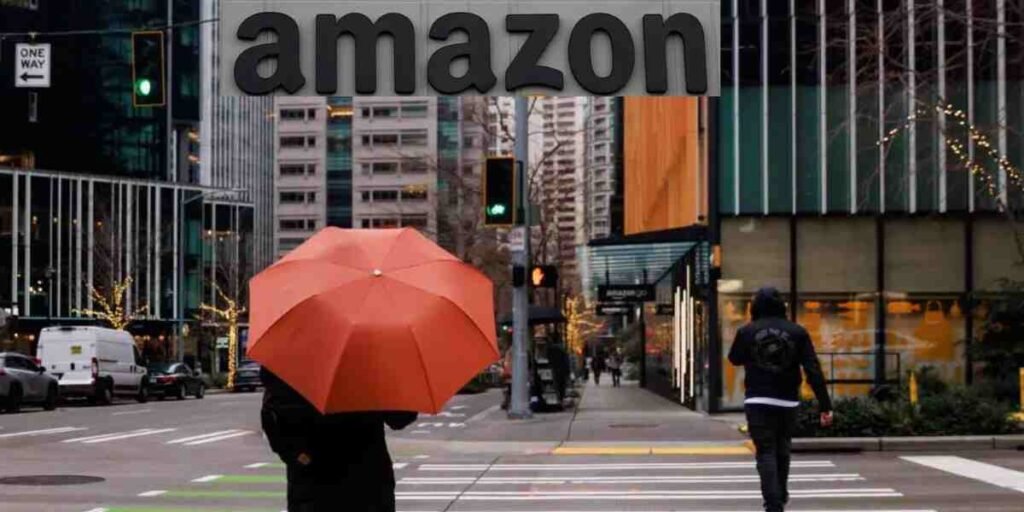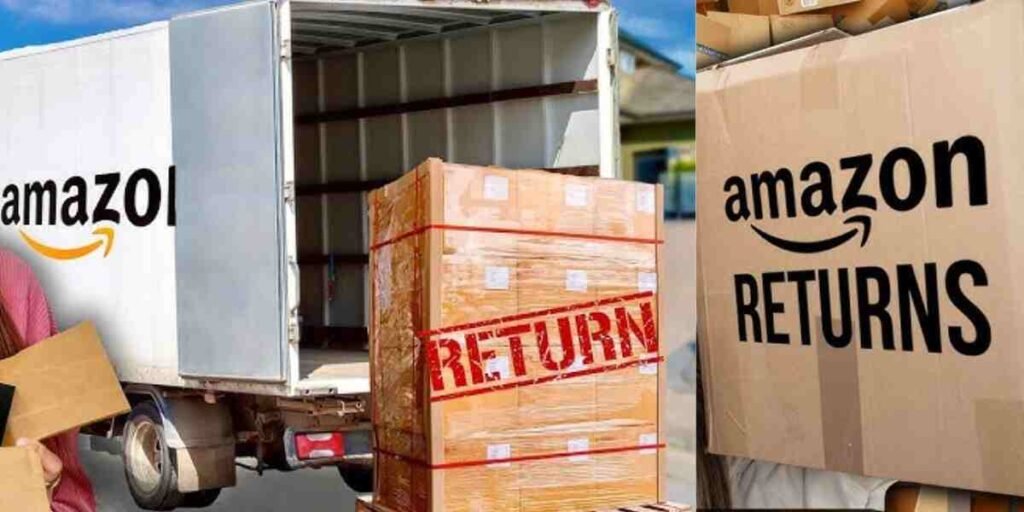Introduction to Amazon Return Crackdown
Amazon return crackdown has become a significant development in the world of online shopping. As e-commerce grows, Amazon has started tightening its return policies to reduce return abuse, protect sellers, and manage rising operational costs. For years, Amazon was known for its easy returns, which became a selling point for many customers. However, issues like return fraud, excessive returns, and account misuse have prompted Amazon to implement stricter guidelines. This shift impacts both customers, who may face account restrictions, and sellers, who can benefit from fewer fraudulent returns. In this article, we’ll explore why Amazon has taken these steps, how the return crackdown affects shoppers and sellers, and what the future might hold for Amazon’s return policies.
Why Amazon Initiated the Return Crackdown
Amazon’s return policies have been generous, but misuse has increased. The Amazon return crackdown aims to combat fraud and reduce operational strain. Amazon’s reputation for easy returns has been both a benefit and a drawback, leading some to exploit it. By controlling returns, Amazon can better manage its resources and expenses.
Key reasons for this crackdown include:
- Operational Costs: Frequent returns mean high processing fees. These costs affect the entire supply chain.
- Increase in Return Fraud: Scams such as false item returns cost Amazon millions each year.
- Enhanced Profit Margins: By limiting excessive returns, Amazon can improve profit margins for itself and its sellers.
The Amazon return crackdown thus helps in balancing customer service with sustainable business practices.

How Amazon Return Crackdown Affects Customers
The Amazon return crackdown has implications for many customers. Those who frequently return items may face restrictions or even account bans. Amazon has become more vigilant, tracking return patterns and flagging accounts with unusual activity.
Here’s how customers might be affected:
- Frequent Returners: Amazon is monitoring frequent return patterns. Accounts with too many returns may receive warnings.
- Account Restrictions: Customers who often return items may see certain account features restricted. In some cases, accounts may be banned.
- Restocking Fees: Some returns may incur restocking fees, particularly for opened or used items.
For customers, this crackdown means adapting to a stricter return process. They need to be more cautious with returns under the new policies.
Amazon Return Crackdown: Impact on Sellers
The Amazon return crackdown also has a major impact on sellers. Returns can hurt profits, especially for small businesses. By controlling return abuse, Amazon helps sellers maintain profitability. Sellers can now expect fewer fraudulent returns and better inventory control.
Main benefits for sellers include:
- Reduced Fraud: Sellers no longer have to deal with high rates of return fraud, which often leads to lost inventory.
- Improved Inventory Management: With fewer returns, sellers can manage stock more accurately.
- Increased Profit Margins: By controlling returns, sellers can avoid the costs associated with processing and reselling returned items.
The Amazon return crackdown therefore offers clear benefits to sellers, fostering a healthier marketplace.
New Policies Under Amazon Return Crackdown
The Amazon return crackdown has led to several new policies aimed at controlling returns. These changes include restrictions on specific product categories, shorter return windows, and more detailed return requirements. Each policy is designed to limit misuse while still allowing genuine returns.
Some of the new policies include:
- Non-returnable Items: Certain items are now labeled as non-returnable. This mainly applies to opened or personalized products.
- Stricter Return Windows: Amazon has shortened the return period for specific items, which means quicker decisions for customers.
- Restocking Fees: Restocking fees may apply, especially for electronics or items returned after significant use.
- Detailed Return Reasons: Customers must now give specific reasons for returns, helping Amazon spot fraud.
These policies under the Amazon return crackdown help control unnecessary returns, benefiting Amazon, its sellers, and responsible customers.
Comparison with Competitors: Is Amazon Return Crackdown Unique?
Amazon and other retailers are enforcing stricter return policies. Many major competitors have also introduced stricter policies to control returns. The Amazon return crackdown, however, stands out for its scale and scope, given Amazon’s vast customer base.
Comparison with other retailers:
- Walmart: Walmart has started limiting returns on specific electronics and high-value items, similar to Amazon.
- Target: Target has imposed return windows for seasonal items and non-returnable categories.
- eBay: eBay sellers are given options to restrict returns on certain listings, reducing frequent returns.
The Amazon return crackdown is part of a broader trend in e-commerce. However, Amazon’s reach makes this crackdown highly visible and impactful.
Customer Reaction to Amazon Return Crackdown
The Amazon return crackdown has stirred a range of reactions from customers. Some are frustrated by the stricter policies, while others understand the need for tighter control. On social media, opinions are mixed, with some users calling out perceived unfairness, while others applaud Amazon’s efforts to curb misuse.
Customer responses include:
- Negative Feedback: Many customers have voiced concerns over account bans and restricted return options.
- Supportive Opinions: Some users appreciate the crackdown, believing it will discourage abuse and keep prices stable.
- Social Media Backlash: Platforms like Twitter and Reddit have active discussions, with mixed views on Amazon’s approach.
This Amazon return crackdown highlights a divide in customer opinions, balancing fairness and strict control.
Tips for Customers to Avoid Issues with Amazon Return Crackdown
To avoid trouble with the Amazon return crackdown, customers need to adapt their shopping habits. Following a few simple tips can help prevent restrictions on their accounts. Here are some ways customers can avoid issues:
- Be Mindful of Return Frequency: Track your return history to avoid too many returns in a short period.
- Understand Amazon’s Return Policies: Review the return policy for each product before purchasing, especially for electronics or high-value items.
- Use Amazon Customer Support Wisely: If a return is necessary, contact Amazon support for clarification and follow the return guidelines.
These tips can help customers stay compliant with the Amazon return crackdown and maintain a positive shopping experience.

Amazon Return Crackdown and the Rise of Return Fraud
The Amazon return crackdown directly targets the rising issue of return fraud, which is a significant concern in the e-commerce industry. Return fraud occurs when individuals exploit the return policy for financial gain, and it costs retailers billions each year. For Amazon, it impacts profits, disrupts operations, and inconveniences genuine buyers.
Several types of return fraud have pushed Amazon toward stricter policies:
- Wardrobing: Some customers purchase items intending to use them briefly and return them after use. This is frequently seen with clothing, electronics, and household items. The result is a damaged or used product that Amazon can’t resell.
- Return of a Different Item: In this scam, the buyer returns a different item, often of lower value, while keeping the original product. This is particularly prevalent with electronics and high-ticket items.
- False Damage Claims: Some customers falsely claim items are defective to avoid return fees, especially when they’ve changed their mind or no longer need the item.
With the Amazon return crackdown, these fraudulent activities are now more closely monitored. Amazon may request photographic proof of product damage or inspect returned items before issuing refunds. These measures help discourage dishonest buyers and ensure a smoother experience for genuine customers. Amazon’s focus on reducing return fraud through the crackdown reflects a commitment to making the shopping experience fairer and more reliable for everyone involved.
Pros and Cons of Amazon Return Crackdown for Shoppers
The Amazon return crackdown brings both advantages and disadvantages for customers. While it may feel restrictive to some, it also offers potential benefits for responsible shoppers. By reducing return abuse, Amazon aims to create a fairer environment, but there are concerns for those who rely on flexible returns.
Pros:
- Less Policy Abuse: With fewer fraudulent returns, Amazon may have more control over product quality and inventory. This could lead to fewer defective or used items resold as new.
- Lower Product Prices: High return costs often impact pricing. By curbing unnecessary returns, Amazon can save money, which could help stabilize or lower product prices.
- Efficient Restocking and Refunds: With a reduced volume of returns, genuine returns may be processed more quickly, benefiting honest buyers.
Cons:
- Reduced Flexibility: Customers now have to be more careful with purchases, as return policies have become stricter.
- Account Bans for Frequent Returns: Those who tend to make frequent returns may face account restrictions or even bans.
- Potential Restocking Fees: Some items now incur restocking fees, making it less convenient and costlier to return opened products.
In the end, the Amazon return crackdown is aimed at protecting the shopping ecosystem. While there are some drawbacks, the crackdown serves to discourage abuse and benefit responsible customers in the long run.

Legal and Ethical Concerns Surrounding Amazon Return Crackdown
The Amazon return crackdown has sparked a conversation around legal and ethical concerns. While Amazon has a right to protect its business, customers have certain expectations regarding consumer rights. This balance between fair return policies and fraud prevention brings up critical issues that are both legal and ethical in nature.
Legal Concerns:
- Unclear Policies: Some customers argue that Amazon’s policies lack transparency, especially around reasons for account bans. The lack of specific guidelines can make it difficult for customers to know what behaviors might trigger restrictions.
- Consumer Rights: In some regions, consumer protection laws guarantee return rights, especially for defective or misrepresented items. Amazon needs to ensure its crackdown doesn’t infringe upon these rights.
Ethical Concerns:
- Fair Treatment of Honest Customers: Ethical concerns arise when genuine customers face restrictions due to strict policies meant to combat fraud. Honest buyers may feel unfairly targeted by account bans or restricted returns.
- Privacy and Tracking: Monitoring customer return behavior can raise privacy concerns. Ethical questions about how Amazon uses customer data come into play as they intensify monitoring.
The Amazon return crackdown must balance protecting its business and respecting customer rights. By addressing these legal and ethical issues, Amazon can ensure fair treatment while maintaining an efficient, fraud-free return system.
Conclusion: The Future of Amazon Return Crackdown
The Amazon return crackdown represents a significant shift in online retail policies. As e-commerce evolves, more companies are expected to adopt similar strategies to control returns and reduce losses. This crackdown is part of Amazon’s broader approach to improve operations, reduce fraud, and benefit both buyers and sellers. But what does the future hold?
For Amazon, the crackdown is likely just the beginning. We may see even more refined policies, with personalized return allowances based on individual customer history. Amazon could also introduce stricter item-specific rules, especially for high-value categories like electronics and apparel. These targeted policies would allow genuine customers to return items when necessary while discouraging abuse.
For customers, this means adapting to a changing e-commerce environment. Shopping carefully, reading product descriptions, and understanding return terms will become increasingly important. At the same time, feedback from shoppers will likely shape the future of the Amazon return crackdown. If policies become too restrictive, customer dissatisfaction could push Amazon to adjust its approach.
The Amazon return crackdown reflects the need for balance in modern retail. While it aims to reduce fraud and improve profitability, Amazon will need to remain mindful of customer needs to sustain loyalty. This crackdown marks a new era for e-commerce, setting standards that other retailers may soon follow.
FAQs on Amazon Return Crackdown
Q: How is Amazon cracking down on returns?
Amazon is taking firm steps to limit return abuse by implementing stricter policies. The platform now monitors patterns of excessive returns more closely, flagging both customers and sellers who might be exploiting return privileges. For sellers, Amazon issues warnings or temporary suspensions if high return rates persist. Repeat violations may even lead to permanent suspensions. Customers who frequently return items may face account restrictions or specific item return limitations as part of Amazon’s crackdown efforts.
Q: Will Amazon blacklist customers for frequent returns?
Yes, Amazon may restrict or even ban accounts for consistently high return rates. While Amazon values customer satisfaction, it also seeks to prevent abuse of its return policies. Accounts flagged for excessive or suspicious return patterns might face penalties, which could include warnings, restrictions on certain purchases, or, in severe cases, a permanent account ban. Amazon monitors these patterns to ensure a fair environment for all shoppers and reduce operational costs.
Q: Is Amazon changing its return policy in 2024?
Yes, Amazon has made updates to its return policy in 2024, which reflect its broader approach to limiting abuse. These updates include shorter return windows for certain products, increased restocking fees, and restrictions on returns for specific item categories. The policy changes aim to balance convenience with sustainable practices, and shoppers are encouraged to review each item’s specific return terms before purchasing.
Q: How strict is Amazon’s return policy?
Amazon’s return policy has become stricter in recent years, especially as part of the Amazon return crackdown. The platform has introduced tighter return windows, restocking fees, and certain non-returnable items, making it important for customers to understand product-specific terms. While genuine returns are still allowed, Amazon takes a tougher stance on returns it suspects are excessive or fraudulent, balancing customer satisfaction with responsible shopping practices.
Q: Does Amazon check return items before issuing refunds?
Yes, Amazon often inspects returned items to ensure they meet the return policy criteria before issuing refunds. For high-value items or products that are commonly misused, Amazon may require customers to provide a reason for the return and, in some cases, proof of the issue (such as photos). Returned items are checked to confirm they are undamaged and resellable. This inspection helps Amazon control quality and reduce return fraud.






